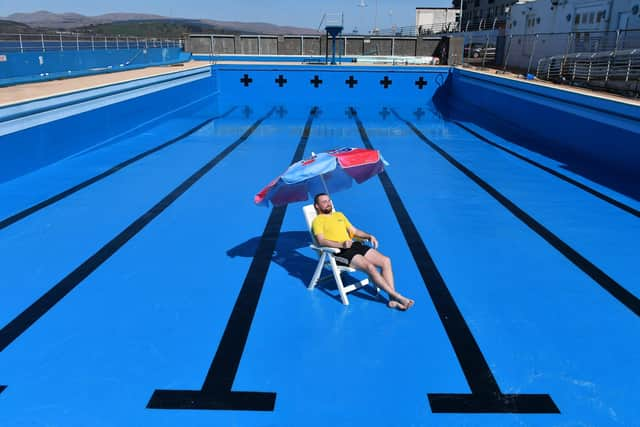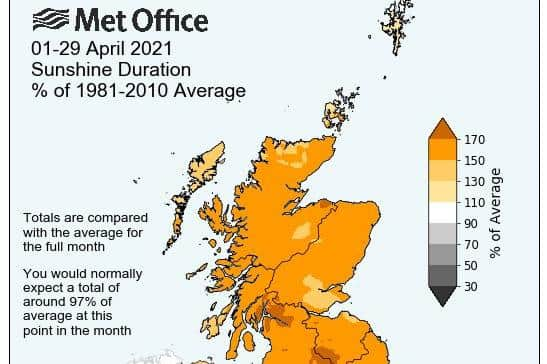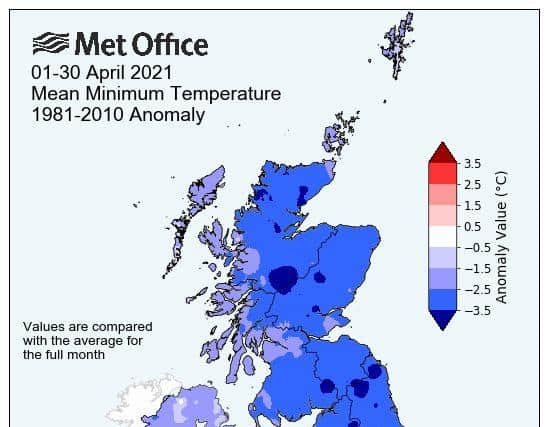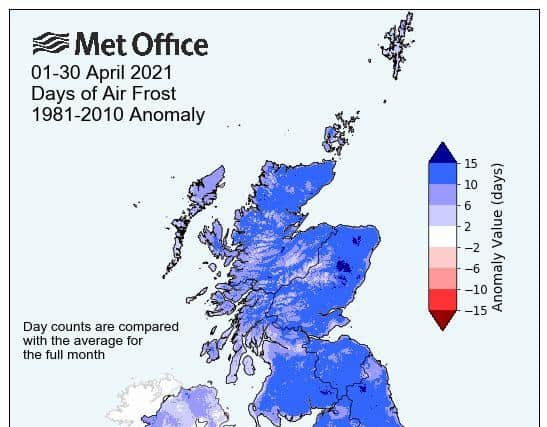Scotland's Weather: April was sunniest on record – but also one of the coldest, says Met Office
Last month saw Scotland breaking its sunshine record for the second consecutive year with 211.5 hours, according to provisional Met Office figures.
The total is 57 per cent higher than the long-term average but it was more than 70 per higher in the Glasgow area and parts of the Borders and Dumfries and Galloway.
Advertisement
Hide AdAdvertisement
Hide AdIt compares to 204.6 hours in 2020, which had been the highest since records began in 1919.


However, average minimum temperatures last month were among the five lowest for April since those records began in 1884.
Across the UK, it was the lowest for April since 1922 and the third lowest on record.
The Met Office said average daily maximum temperatures were also below normal, but not by as much as the minimum temperatures.
It said April saw the highest level of air frost for 60 years amid conditions more typical for December to February.


As gardeners will have noticed to their frustration, there were also a record high number of ground frosts across the UK, with 22 days in April compared to an average of 12 days.
Mike Kendon, senior scientist at the Met Office’s national climate information centre, said: “April has been an incredibly notable month in terms of the statistics.
"Despite temperatures remaining stubbornly low in many areas, long days of sunshine was the norm and well ahead of averages, especially in northern England, Wales and Scotland.
Advertisement
Hide AdAdvertisement
Hide Ad“A long, prolonged spell of dry and settled conditions was only interrupted by a wet few days in western Scotland in the first half of the month.


"Cold nights have been the norm across the UK, especially in northern England and Scotland, with the lowest reading coming in at –9.4C at Tulloch Bridge on April 12.
“Areas of high pressure have become established over or around the UK, feeding in cold conditions and creating clear nights, allowing any heat to escape.
"The high pressure has tended to prevent April shower activity that we might more typically expect to see at this time of year.
"The clear skies by day have allowed temperatures to rise in strong spring sunshine, only to be lost again over night.


"Early in the month, we saw a cold plunge of Arctic maritime air bringing wintry showers with lying snow in some locations, particularly northern Scotland.”
The Royal Horticultural Society confirmed the cold, dry conditions had proved challenging for gardeners.
Chief horticulturist Guy Barter said: “Considerable damage has been experienced in many gardens, with flowers such as camellia and magnolias being scorched.
Advertisement
Hide AdAdvertisement
Hide Ad"Watering before sowing and after planting are now necessary, but after such a wet autumn and winter, there is plenty of water lower down in the soil that established plants can access.”
He advised growers to keep tender plants inside for now, or cover them with cloches or horticultural fleece if they need to go out, because of the continued risk of frost.
A message from the Editor:
Thank you for reading this article. We're more reliant on your support than ever as the shift in consumer habits brought about by coronavirus impacts our advertisers.
If you haven't already, please consider supporting our trusted, fact-checked journalism by taking out a digital subscription.
Comments
Want to join the conversation? Please or to comment on this article.
